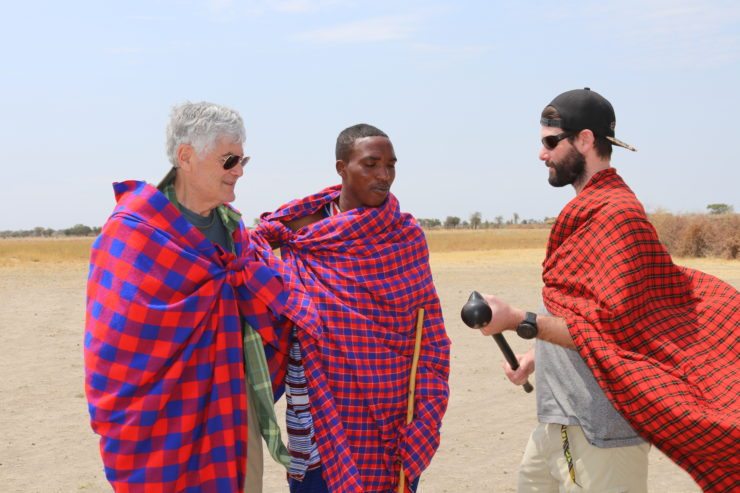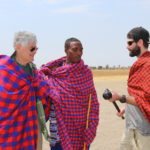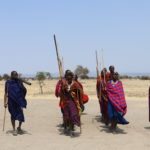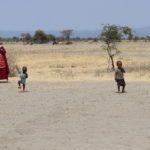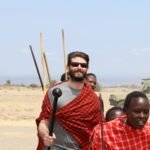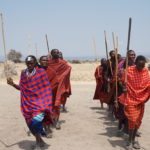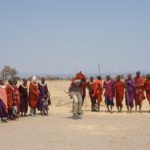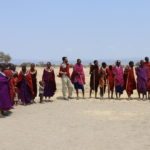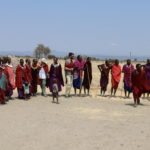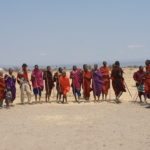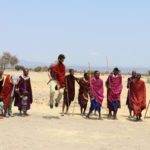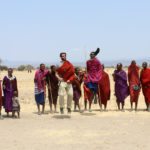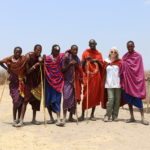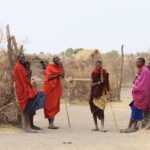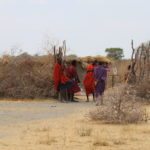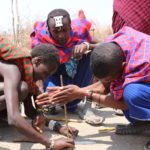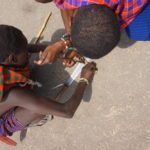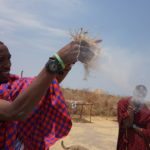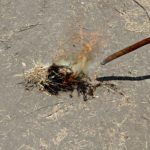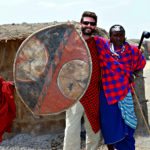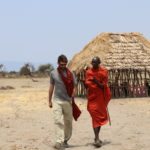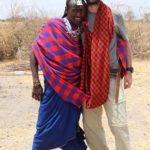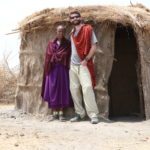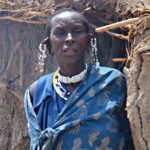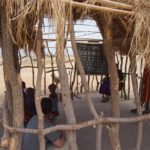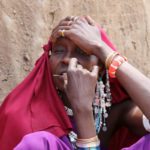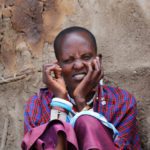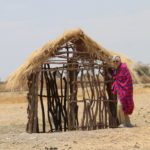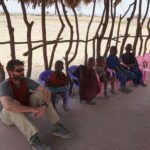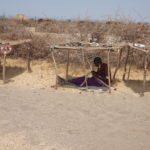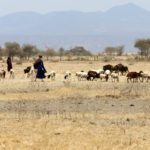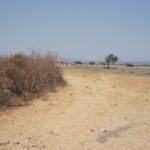September 25 & 26, 2016
We arrived at Nogorongoro Farmhouse mid day on September 25. We spent the rest of the day relaxing, exploring the gardens and getting massages.
https://shelleylevine.com/ngorongoro-farm-house/
We have always been interested in how people live, social dynamics, traditional customs and folklore.
The next morning we visited an “authentic” Maasai Village with Stanford. Maasai are the most famous of the indigenous tribes of East Africa and the most common to visit. Just outside the entrance to the village, we were greeted by one of the village leaders. Stanford negotiated “a donation” to the village. Opening the village for tourism allows tribes people to generate vital income that can pay for food, life-saving medicines and education.
We were welcomed with chanting and dancing and jumping. Men, women and children came out to welcome us. Chanting, dancing and jumping is an integral part of the Maasai culture. The traditional dances they performed for us, at one time would have been saved for special occasions. Now they are performed for money. We were invited to join in. We were given the traditional Maasai clothes to wear (a large blanket) and I was adorned with a beaded neck ring. Clifton impressed with his jumping skills.
After being welcomed by song and dance, we entered the village gates. We were given a tour of the village, shown how they maintained their homes, how they build fires using sticks and kindling – the traditional ways of the Maasai. Young Maasai men showed us how to build a fire using sticks, grass and a large knife. Clifton bought the knife.
Maasai live inside circular kraals, called Enkang. These karals are enclosures for cattle or other livestock. They are made up of prickly thorns, which prevent lions and other animals from attacking the cattle. Each Enkang also has a few homes. Maasai houses, Inkajijik or enkaj, are loaf shaped and are made of mud, sticks, grass, cow dung and cow’s urine. Small livestock are often taken into the enkaiji for protection.
Women are in charge of making the houses while men are in charge of making kraals. Enkai are small, typically measuring only 9 x 16 feet and standing only 4 or so feet high. There are no windows and only a small opening in the roof to allow smoke from the central fireplace to escape. There is a narrow doorway, little more than 19 inches wide, with a central overhang so that calves may enter the house, but not cows. I managed to get through the door and it was very dark. Allan did not make it.
We participated in a lesson in the village school, more of a day care. The children, who were very young recited numbers in English and sang the ABC’s. I suspect the older children were in “real” school. Compulsory education is Tanzania is 7 years. Grades 1 through 7.
As we neared the end of the visit we were taken around to different tables holding crafts made by the village women. Each household had a table, but I believe that all proceeds go to the entire group. Once we had chosen our “souvenirs” the negotiation began. This is where Standford, our Maasai, driver and guide came in. As it turns out the head “negotiator” was trying to double the price. Standford called one of the women over and explained what was going on. Needless to say, she was not happy. The men were raising prices so they could keep a little extra for themselves. We finally settled on a price, still double the road side stands. We did not mind. We were happy to support the village and free enterprise. We were given a glimpse into the lives and culture of the Maasai in return for potential purchases from their inventory of crafts.
Cultural visits provide vital income to help tribal people survive in today’s world. This is not the only time we saw Maasai. Our guide was Massai. You see Maasai herding cattle to get them to water, working in the lodges and camps, and in the markets and towns. You see school children of all ages walking to and from school. The school children were uniforms that signify the school they attend.
The Maasai may have showed us how they traditionally lived, but in reality the Maasai are becoming part of the modern world. They have mobile phones. They ride bikes and scooters. And the traditional fire building methods…did they do that all the time? I doubt it. They probably use matches.
Click on a photo to start the slide show.
- Village Leader
- Welcome Dance
- Maasai Children
- Traditional Dance
- Building a fire the Maasai way
- Success!
- Fire Starting Skills
- Schoolroom
- Maasai Woman
- Maasai Woman
- Allan found the bathroom!
- Schoolroom
Photo Credit: Shelley and Clifton Levine

